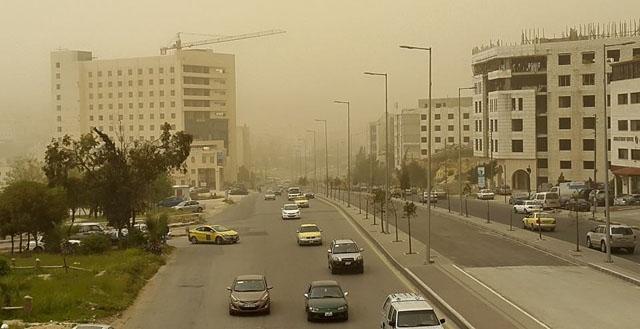You are here
Rain, hail forecast as unstable weather affects Kingdom
By Muath Freij - Apr 15,2015 - Last updated at Apr 15,2015

AMMAN — Unstable weather conditions that brought dust to the Kingdom on Wednesday are expected to come to an end on Thursday, with a chance of rain particularly in the south, according to the Jordan Meteorological Department (JMD). Raed Rafed, who heads the JMD’s forecasting department, said there is a chance of heavy rain and hail accompanied by thunder in the southern region on Thursday morning.
“These conditions will taper off later on Thursday and the weather will be cloudy the following day,” Rafed told The Jordan Times over the phone.
Temperatures in the capital will range between a high of 16°C and a low of 7°C on Thursday, he noted.
Rafed called on motorists to exercise caution due to possible fog formation in the morning. Temperatures are forecast to rise on Friday, reaching a maximum of 19°C in Amman and dropping to a minimum of 9°C. Rafed said more unstable weather conditions and several khamsini depressions are expected to affect Jordan until the beginning of next month.
The name is derived from khamsin — meaning 50 in Arabic — because it usually occurs during a 50-day time frame between March 21 and May 10. Khamsini weather conditions affect the eastern part of the Mediterranean an average of once a week during this period, according to the JMD.
Hot, sand-laden winds, originating from the Atlas Mountains in North Africa, annually move east of the Mediterranean Sea around this time of year and are usually preceded by unseasonably high temperatures, and dry and dusty conditions.
Health experts advise the public to take precautionary measures during this period, as allergy cases and respiratory system infections increase, particularly due to pollen grains and dust.
A depression and a cold air mass, which affected the Kingdom between Friday and Monday, increased water stored at the dams, which now hold 213.3 million cubic metres (mcm), according to the Ministry of Water and Irrigation.
Two mcm of water entered the country’s 10 major dams, raising storage levels to 65.54 per cent of their total capacity of 325mcm, according to official figures.
Related Articles
A weak depression that affected the Kingdom on Wednesday brought rainfall to several areas, the Jordan Meteorological Department (JMD) said.
The country will be affected on Friday by unstable weather conditions, which will bring light rain to the eastern and southern regions, according to the Jordan Meteorological Department (JMD).
Unstable weather conditions are forecast to affect the country on Tuesday, bringing thunderstorms and scattered showers, according to the Jordan Meteorological Department (JMD).



















